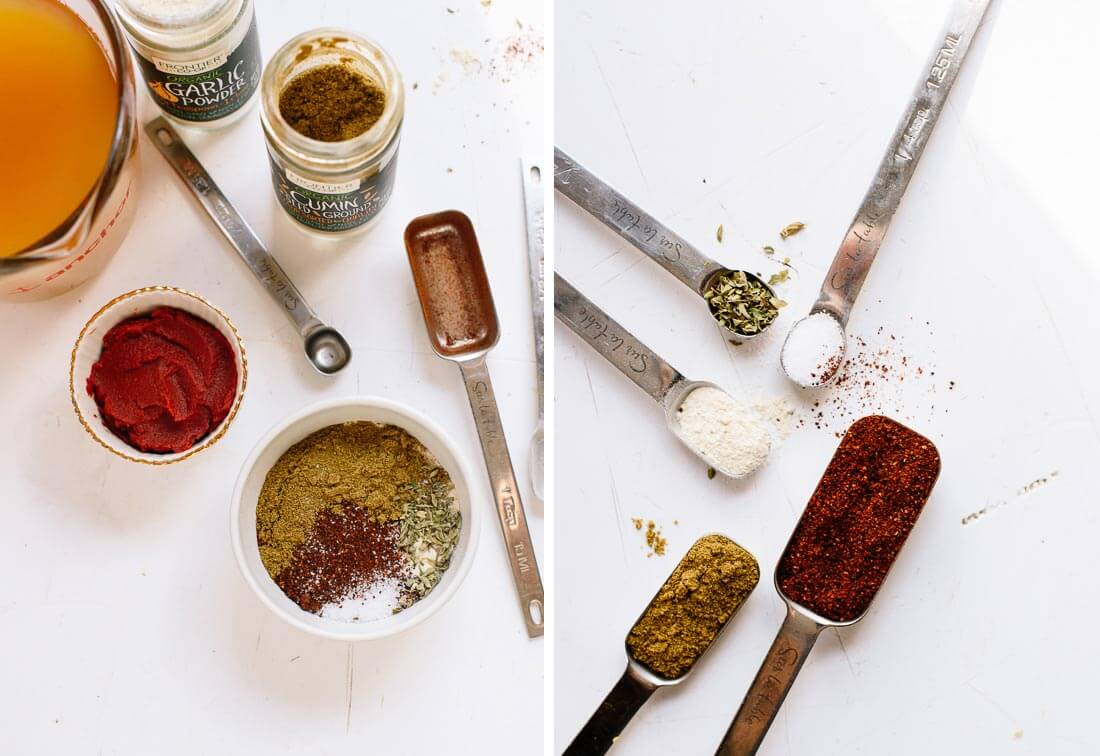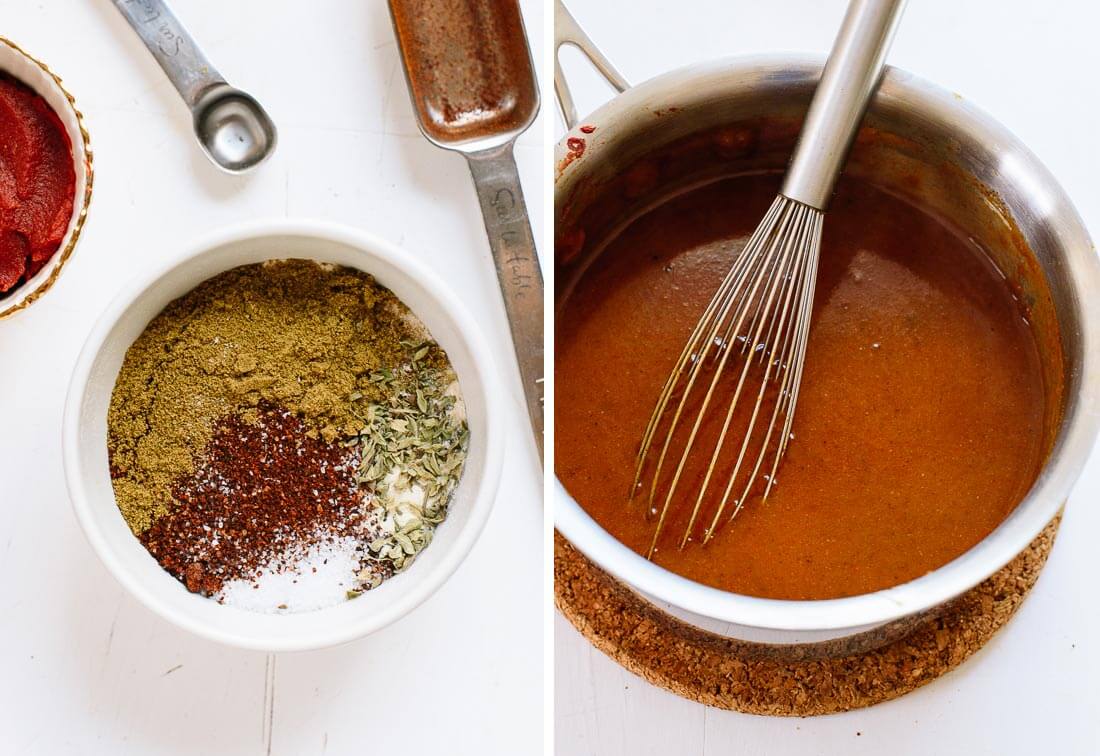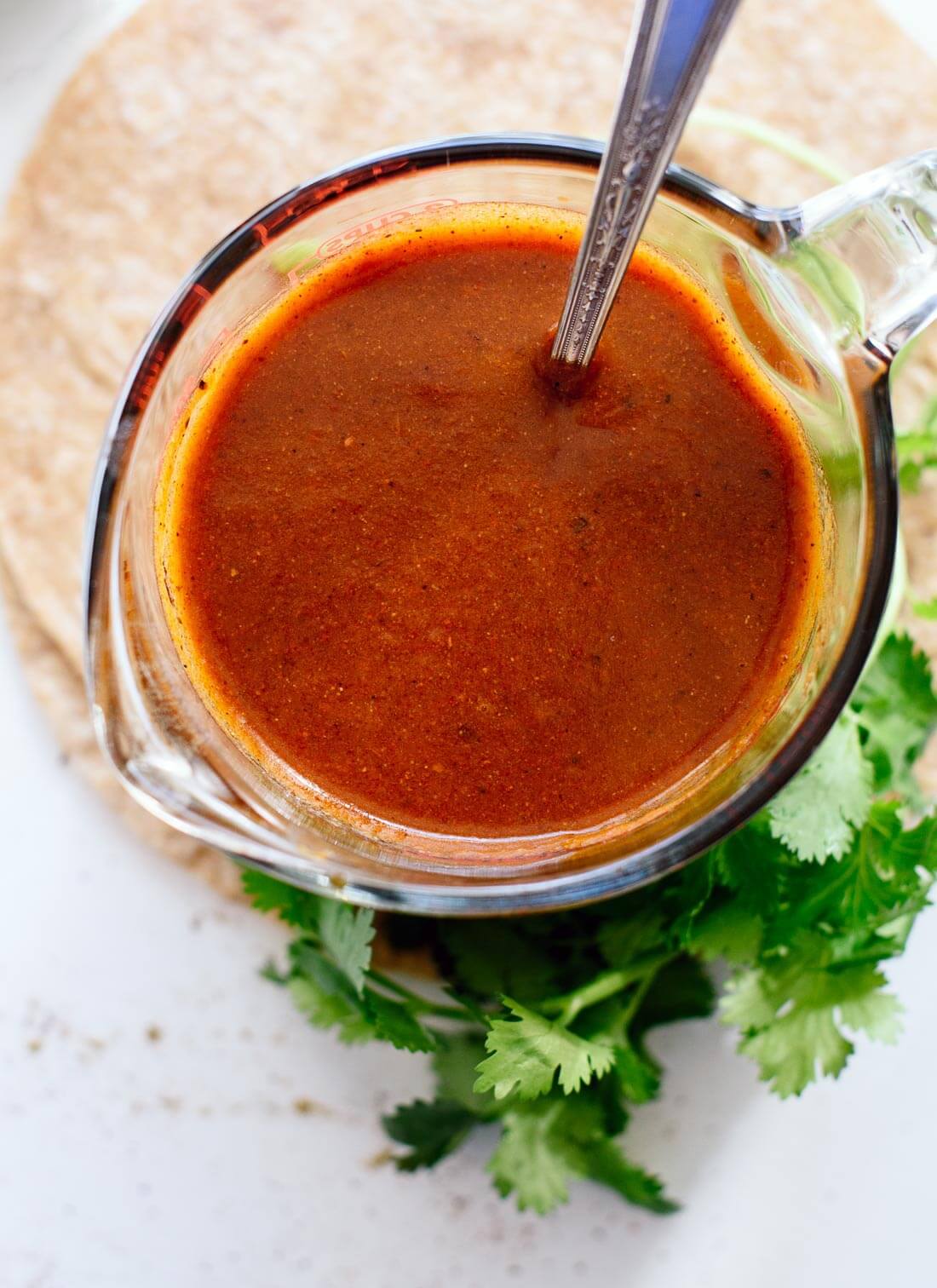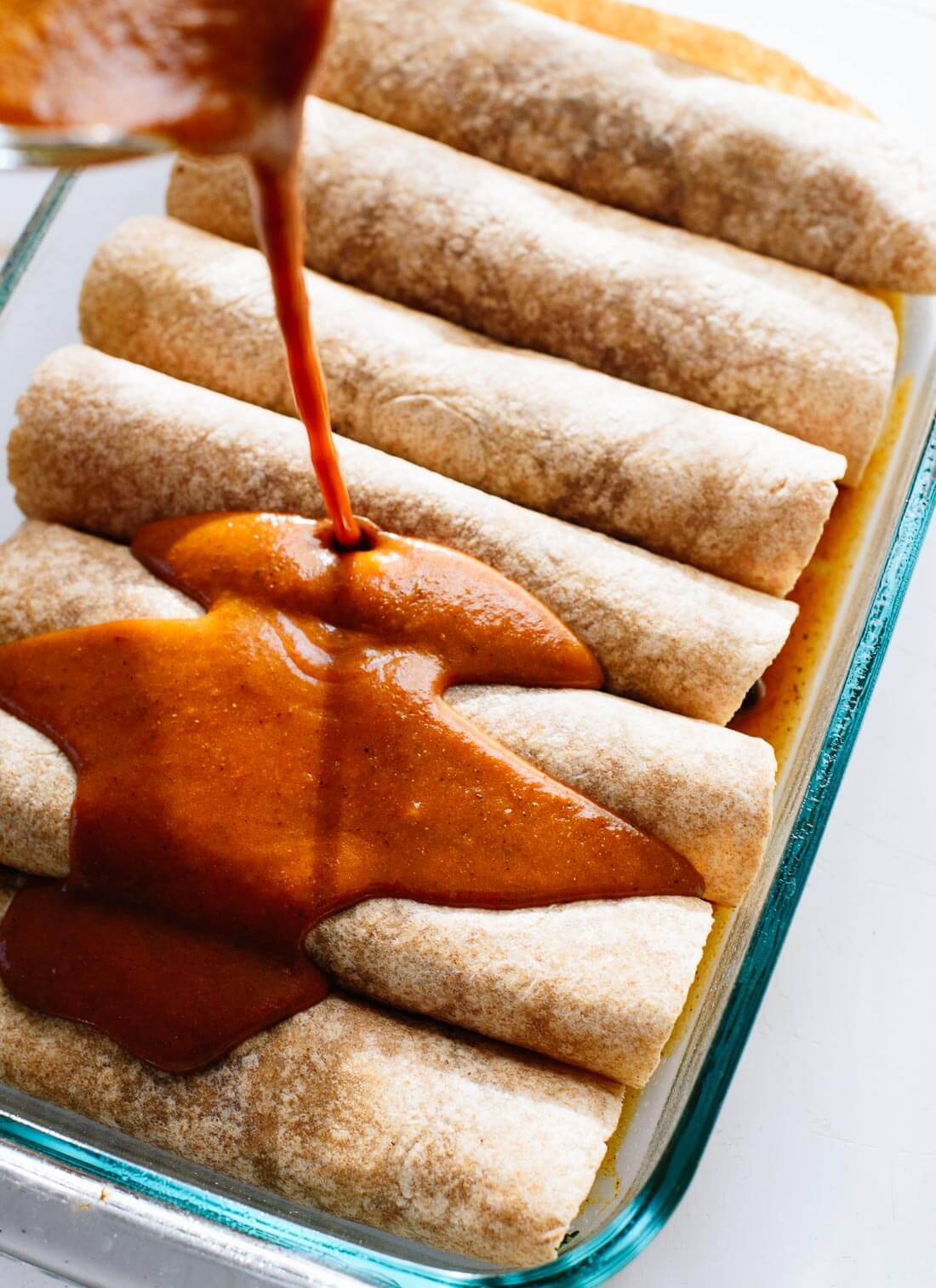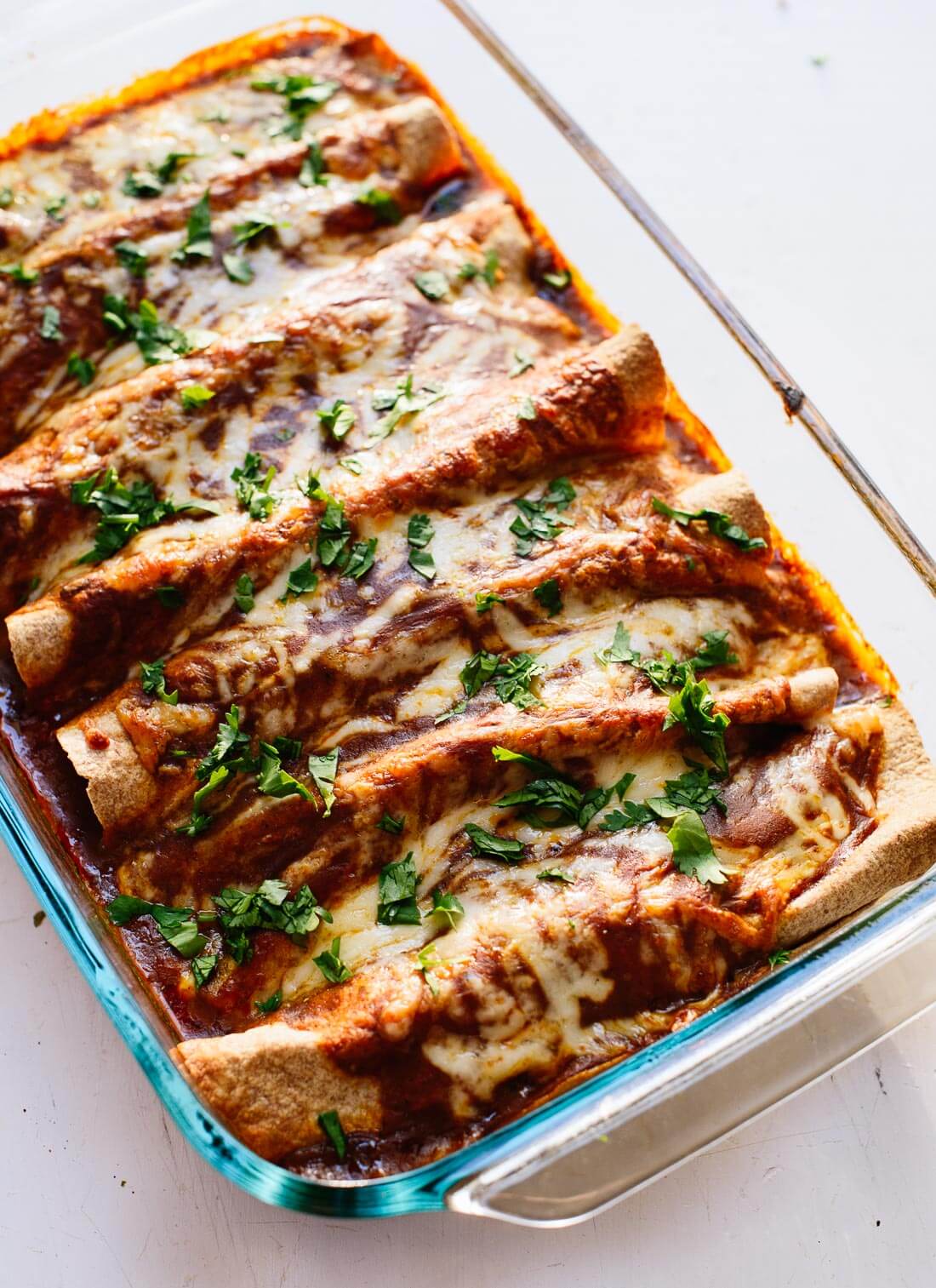I’ve been working on my enchilada game lately, for both the cookbook and an upcoming enchilada recipe. There is an art to making great enchiladas, and the sauce is a key component. I thought I’d share my tested and perfected enchilada sauce recipe today, in case you want to try it on your favorite enchilada recipe. It’s ready in under ten minutes, and I promise, it’s so tasty you won’t want to go back to the store-bought kind again.
When I developed my go-to sauce (first seen on my spinach artichoke enchiladas), I tried at least five of the top sauce recipes on Google, all with different ingredients and techniques. I tried making sauce with tomato sauce, which tasted too raw and was kind of goopy. I tried making sauce with blended diced tomatoes, and it had the same issues. I tried sauce without any tomato ingredients, and it didn’t taste quite like the enchilada sauce I grew up eating, or the sauce at my favorite Mexican restaurants. I tried sauces made without any thickener (like flour or cornstarch), and they pooled at the bottom and turned my enchiladas into a soupy, texture-less casserole. Finally, after some experimentation and cross-referencing with America’s Test Kitchen, I landed on the perfect enchilada sauce. Vegetable broth forms the base of the sauce, but it’s only added after you make a simple roux of flour and oil. You need a full three tablespoons of each to properly thicken the sauce. I tried making this sauce with a gluten-free flour blend and that worked great as well.
The Best Enchilada Sauce
Four reasons to love this recipe:
This sauce is full of authentic Mexican flavor. It comes from a combination of dried spices, which are sautéed in oil to bring out their best, and umami-rich tomato paste. The cinnamon is optional since some people just don’t like it in savory applications, but just a pinch adds some lovely warmth and complexity. The final kicker is a tiny splash of vinegar, which really amps up the flavor. Unlike canned enchiladas sauces, this homemade sauce is free of unnecessary processed ingredients and MSG (that’s monosodium glutamate, which gives my mom migraines).
I love this sauce and I’m confident you will, too, since it’s gotten rave reviews on my spinach artichoke enchiladas and veggie black bean enchiladas. Please let me know how this recipe turns out for you in the comments! Your feedback keeps me going.
Watch How to Make Enchilada Sauce
Storage suggestions: Extra enchilada sauce will keep well in the refrigerator for up to 5 days. Or, freeze it for up to 3 months. Let it cool to room temperature before transferring to a wide-mouth mason jar, leaving some room at the top for expansion (don’t screw on the lid completely until the mixture is fully frozen), or a freezer bag (remove excess air before sealing). Make it gluten free: Just use gluten-free all-purpose flour blend. I tried with Bob’s Red Mill brand and it worked great. Make it tomato free: You can omit the tomato paste. You might want to up the spices a bit. The sauce won’t taste quite like the enchilada sauce you might buy at the store, but it will still be good! Change it up: The chili powder, cumin and garlic powder are essential here, but feel free to change up the other spices to suit your preferences. If you love this sauce: Check out more of my Mexican recipes here!


